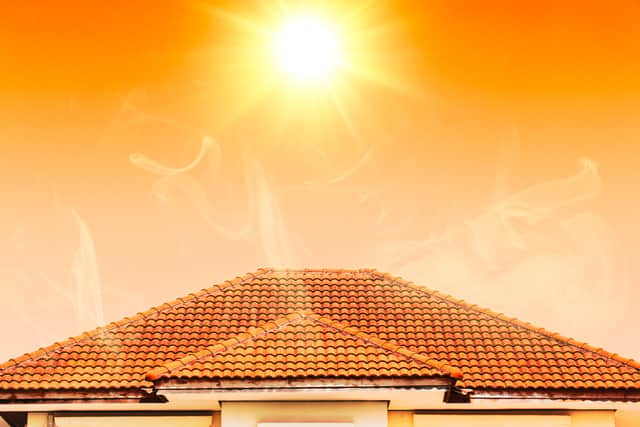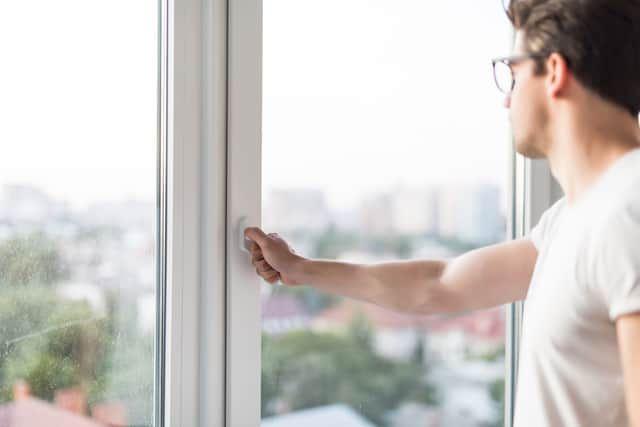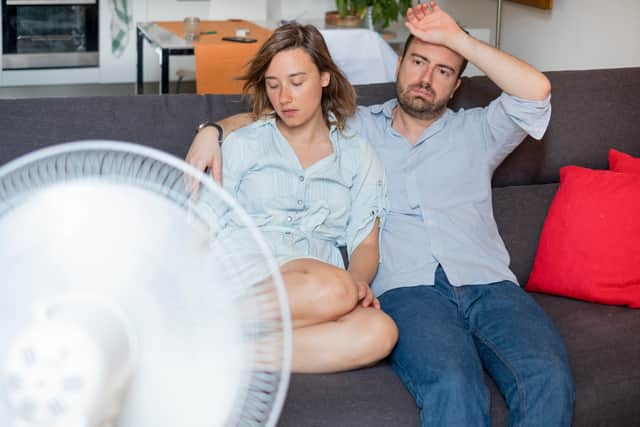How to keep your house cool in summer: best tips for cooling home during heatwave UK, as hot weather continues
and live on Freeview channel 276
After the UK’s hottest day ever was recorded in July 2022, you might well have had enough hot weather for this summer at least.
But temperatures are climbing again this week, with the peak of the heatwave expected between Friday (12 August) and Saturday (13 August).
Advertisement
Hide AdAdvertisement
Hide AdThe Met Office weather forecast currently predicts the mercury will climb to 35℃ in England - with 36℃ possible in some areas - while heat health alerts are in place for much of England and Wales.
So, if your home is normally a heat trap, how can you keep it cool?


How hot is the weather going to be?
The whole of the UK is experiencing a heatwave, but the highest temperatures are expected to be seen in western, central and southern England.
While temperatures will reach a maximum of 36℃ on Saturday, they will fall short of the temperature record of 40.3℃ recorded in Lincolnshire on 19 July.
Advertisement
Hide AdAdvertisement
Hide AdPart of the reason for this is that the August sun is less powerful, and daylight hours have got marginally shorter.
However, it will still be extremely hot, so it’s worth taking precautions and being vigilant for the signs of any heat-relayted health problems.
How can you keep your house cool?
UK homes are designed for colder weather conditions.
It’s why we tend to have carpets and curtains, rather than the hard flooring and shutters you see in hotter parts of the world.
These interiors mean it’s already likely to be uncomfortably hot in your home.


Advertisement
Hide AdAdvertisement
Hide AdAccording to the UK government, 1 in 5 homes are likely to overheat in cool summer temperatures - a figure that’s likely to be much higher in these current extremes.
The types of home/household features most susceptible to hot conditions include:
- Top floor flats
- Flats with opening windows on just one side
- Homes that have little in the way of shading
- Large unshaded east, west or south-facing windows
- Homes located in densely packed urban areas that have little or no green space nearby
If you live in a dwelling with some or all of these features, the government says it might be a good idea to head to a public building, like a library, where there’s likely to be air conditioning.
But, if that’s not possible - or your home is just about bearable - here are five ways to keep things cool:
Close your windows in the day
Advertisement
Hide AdAdvertisement
Hide AdIt might seem counterintuitive, but closing windows actually stops heat from entering your home - especially if they face south.
Drawing your curtains or blinds once you’ve done this will also help.
The government says an even better thing to do is lower any external shades or shutters, although most homes don’t have them installed.


If you have glass doors that open out onto a patio, it’s worth covering the patio closest to the doors so as to stop any heat being reflected in.
Advertisement
Hide AdAdvertisement
Hide AdOnce the mercury dips below the temperature in your home, you should then open your windows and curtains to allow air to circulate around your home.
Create a breeze through your home
Opening all of your windows isn’t a good idea in many homes, but can be effective if you’re able to create a breeze.
To do this, you’ll ideally need windows at opposite sides of your home or a particular room in your home.
While having them open, you should still try to cover them with a curtain or blind if possible to deflect as much heat outwards as possible.
Advertisement
Hide AdAdvertisement
Hide AdIn theory, if you live in a Victorian-era home and still have sash windows, you can create a breeze by opening the top and bottom sections.
The thinking goes that the heat is pushed out of the top by cooler air coming in from the bottom.
Get creative with ice and water
Energy provider Ovo Energy has made a slightly bizarre recommendation: leaving bowls of water around your home.
It says doing this can help to cool hot air.
The firm also recommends placing a bowl of cold water or ice in front of a fan.
Advertisement
Hide AdAdvertisement
Hide AdBy doing this, you can theoretically blow cool air into your room.
We’ll leave it to you to decide whether you notice a difference.
Turn your fan on
While we might be living in a major cost of living crisis, having a fan on can make a major difference to your perception of temperature.
They actually don’t cost much to run, so you won’t be breaking the bank by having one on all day.
Advertisement
Hide AdAdvertisement
Hide AdTo get the best out of your fan, position it low down in the room you’re in.
Given the coldest air is found low down, the fan will then be blowing that around rather than the warmer air found higher up.
Switch off appliances and electrical items
While household appliances are using their energy more and more efficiently these days, they can still give off heat.
So that means keeping your computer and TV usage to a minimum and avoiding appliances like the oven, washing machine and dishwasher.
Advertisement
Hide AdAdvertisement
Hide AdThe latter two are also bad for creating humidity in your home, something that will increase your perception of heat.
Lights are also big heat emitters, especially if you have old, inefficient bulbs.
Keeping the lights off will help during this heatwave, but once those bulbs fail it might be worth switching to more energy-efficient types, like LEDs.
Comment Guidelines
National World encourages reader discussion on our stories. User feedback, insights and back-and-forth exchanges add a rich layer of context to reporting. Please review our Community Guidelines before commenting.
